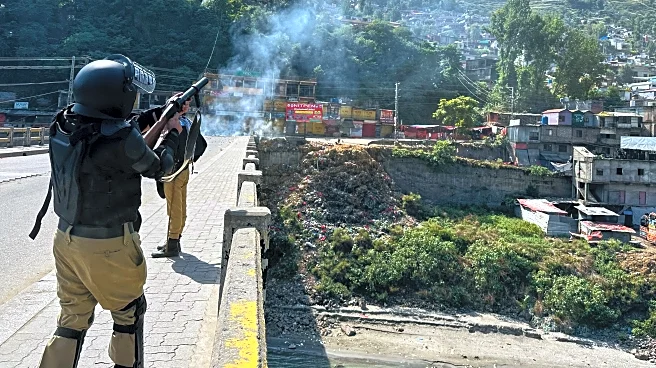What's Happening?
Pakistani authorities have successfully negotiated a peace agreement with a civil rights alliance, bringing an end to days of violent protests in Pakistan-administered Kashmir. The protests, which resulted in at least 10 deaths, were sparked by demands for better public services and subsidies. The regional government, led by Prime Minister Chaudhry Anwarul Haq, agreed to continue subsidizing wheat and electricity and accepted over three dozen other demands. These include reducing the number of ministers and improving health and education services. The agreement was reached after two days of negotiations in Muzaffarabad, the capital of the region, with the involvement of a high-level delegation sent by Prime Minister Shehbaz Sharif.
Why It's Important?
The resolution of the protests in Pakistan-administered Kashmir is significant as it addresses long-standing grievances related to public services and governance in the region. The agreement could lead to improved living conditions for residents by ensuring continued subsidies and better public services. It also highlights the effectiveness of dialogue and negotiation in resolving civil unrest. The successful negotiation may strengthen the regional government's credibility and stability, potentially reducing future unrest. However, the historical context of unfulfilled promises from similar agreements in 2024 suggests that the implementation of this agreement will be closely watched by the public and civil rights groups.
What's Next?
The next steps involve the implementation of the agreed-upon demands, which will be crucial in maintaining peace and preventing future protests. The regional government will need to demonstrate its commitment to fulfilling the promises made, particularly in improving public services and governance. Monitoring by civil rights groups and the public will likely continue to ensure accountability. The situation in Kashmir remains sensitive due to its disputed status between Pakistan and India, and any developments in governance or public policy could have broader implications for regional stability.











